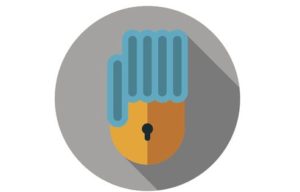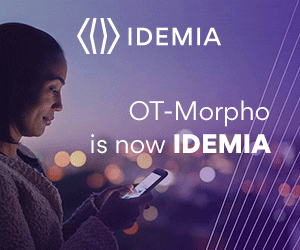Biometric technologies have had an almost revolutionary impact in the diverse areas of smartphones, border control, and financial services in recent years. And the variety of these applications – from enabling true mobile banking to flagging security threats at the airport – have offered some indication of the versatility of biometrics, with these technologies continuously spreading into new application areas. One of the most exciting of these is healthcare, where longstanding issues like patient identification and relatively new ones like securing digital patient data are now starting to get addressed thanks to biometric technology.
This growing trend has led to some pretty striking speculation in market terms. A Market Research Future forecast issued last summer, for example, predicted that the global healthcare biometrics market will reach a value of $5.6 billion by 2022, reflecting a Calculated Annual Growth Rate of over 22 percent since 2016; and a report issued by Frost & Sullivan last month emphasized that the biometric healthcare market is already seeing strong revenue growth, and that this trend is poised to continue. This trend is also helping lift adjacent technological areas like eye tracking, which is expected to grow from a value of $560 million this year to almost $1.8 billion by 2025, according to another recent report.
The Importance of Patient ID
So where is all this money actually going to be spent? One of the major areas is patient identification. Healthcare organizations have long struggled with this issue: first and foremost, accurate patient identification is critical for care, perhaps especially in cases in which patients aren’t able to identify themselves. This is where solutions like Imprivata’s PatientSecure, which matches individuals’ palm vein biometrics to their medical profiles, can offer substantial benefits.
But there’s a more mundane issue that nevertheless poses its own threat to healthcare organizations: duplicate records. This can lead to administrative challenges, and substantial burdens in terms of cost. Fortunately, biometric patient identification can virtually eliminate this problem, since such systems can reliably match a patient to the correct records with each and every hospital visit. And in addition to helping healthcare organizations, biometric patient identification may even hold the potential to help government and health authorities realize some of the United Nations’ Sustainable Development Goals, as can be seen in last year’s announcement that NEC and Nagasaki University would be trialing a biometric patient ID program focused on maternal and pediatric health in Kenya’s Kuware County.
Providing Care and Fighting Fraud

In addition to identifying patients within a healthcare facility, biometric technology is also increasingly being leveraged at patient enrollment in order to fight fraud. For example, last autumn Mastercard launched a portfolio called Mastercard Healthcare Solutions that included biometric and behavioral analytics technologies aimed at helping healthcare organizations to verify the identities of new customers at the time of enrollment, and to allow for mobile authentication of these customers going forward.
Another company renowned in the financial services sector – this one specializing in biometric authentication – also made the leap into healthcare last year. Based in Spain, FacePhi offers multimodal solutions, but really made a name for itself with pioneering selfie-based authentication technology that proved to be a big success in the financial services market, especially in the LATAM region. And this technology offers obvious appeal in the healthcare sector too, so FacePhi partnered with Swiss Medical Group to bring this kind of authentication technology to customer onboarding for healthcare plans.
Meanwhile, Unisys won a contract with the US Department of Health and Human Services (HHS) that would see the latter leverage facial recognition to identify the suspects of services theft, among other technological modernization efforts. And this was a $49 million, five-year contract, helping to emphasize the value that such technologies bring to the table.
There are plenty of other exciting applications for biometrics in the healthcare market, and we will be delving into some of the biggest of these in the coming weeks for Healthcare Biometrics Month. But patient identification, situated at the first point of contact between healthcare providers and those receiving their services, is a natural place to start, and one of the most important to consider as the healthcare biometrics revolution unfolds.
*
Healthcare Biometrics Month is made possible by our sponsors: HID Global, IDEMIA and Veratad.
–
February 6, 2020 – by Alex Perala










Follow Us